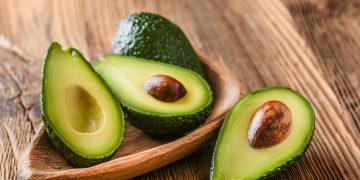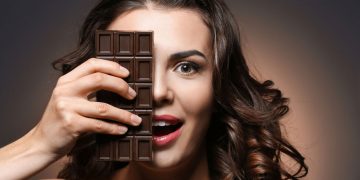On a daily basis celebrities struggle with self-image, battle with their inner voices, quarrel with the image they project to others, just like we do, but for them, it is a little bit more complicated. they have to go through all of it under the scrutiny of millions.
Just as merchandise in a store, media commercializes a celebrity’s image only caring if it sells magazines, gets hits, likes, tweets, etc. Like products, celebrities are expendable and be replaced by the next, newer, thinner, younger, more eccentric person in line. So they have to do anything in their power to stay in the spotlight for as long as possible. In a society that worships youth and beauty, there is no room for different.
Everything needs to fit into the most common beauty standards; impossible standards if we take into account that the average woman nowadays is a size 12. Incompatible images in magazines are about thin, flat chested, size zero women have nothing to do with us, common people. Most surely this causes millions of women to develop terrible self-image issues and, even worse for celebrities in order to sell their image, they have to mandatorily fit into those parameters.
Media is always promoting the newest and most effective diet to stay young, thin, and beautiful. And not just we “mortals” will try these diets out; celebrities, in their humanness, will try them too. Fad diets are so diverse and coming at such rates, that it is almost impossible to keep track of them and there will always be an eager celebrity who will follow, and most of all, promote them. Frequently, these are crash diets that will help them lose those extra pounds before their next movie or gala.

Constant dieting can have a counter effect on weight loss. When you restrict your calorie intake, your body may perceive that it is being starved, causing it to retain fat. If we are unaware of this, we could be tricked into believing that there is something wrong with us and not with the diet that we are trying out. This will definitely lead to a constant circle of dieting (starving), weight loss, weight gain, and dieting again, thinking that maybe this time the results will be different. The national association of Anorexia Nervosa publishes on their website that 35 percent of normal dieters progress to pathological dieting and 25 percent of them develop an eating disorder. No wonder why these disorders affect many celebrities.
Irwin and Barbara Sarason on the book Abnormal Psychology, classify eating disorders in three main categories.
Anorexia Nervosa: An exaggerated desire to be thin, extreme worrying about body image and weight loss
Bulimia Nervosa: Binge eating accompanied by a counteraction to avoid the effects of the excessive food intake (vomiting, use of laxatives, diuretics, extreme exercise).
Binge Eating: Compulsive food intake but without the purging related to bulimia.
Just a few years back, actors Rachel Farrohk, who weighs 40 something pounds, went on social networks asking for money to pay for the treatment that would save her life. Many people responded actively and she was able to pay for it. Nevertheless, what we as a society should be addressing is not the remedy, but the origins of the problem: the industry’s tendency to use extremely thin women, objectifying beauty, and discarding the old, the weird, the different, and the overweight. Sometimes, and very rarely, they do hire different people to act in their movies or model their clothes but it is the exception and not the rule. I particularly love the case of the Spanish brand Desigual who hired Winnie Harlow, a model with vitiligo who breaks several rules for the standardization of beauty. Sadly, the truth is that not everybody wants to hire someone who is not blonde, is plug sized, and is over twenty. This may help to explain why anorexia nervosa is mostly developed by white American young women, many of whom may fit these descriptions.
The pressure is even greater for celebrities who eat, breathe, and sleep the industry and, consequently, there are many cases of superstars going through crazy diets to adapt their bodies to a role. One of the most famous cases is Renee Zellweger who was told she wouldn’t be hired if she didn’t gain 20 pounds to play the chubby journalist Bridget Jones. After the tole, she managed to lose the gained weight and go back to size zero; she explained that her secret was to nibble on ice cubes to satiate her hunger. Another celeb who goes on a weird diet is Jennifer Aniston; she practices the “Baby Food Diet,” where she only eats 14 servings of baby food each day to reach her desired weight. Reese Witherspoon claims to have lost seven pounds in one week by practicing it. The list of weird diets is as varied as celebrities are and most of them are not recommendable. There even is a so-called “Cookie diet” (6 cookies + 1 real meal every day), imagine how harmful this could be?

Thankfully there are also many celebs who can serve as role models with their habits, and demonstrate the virtue of healthy dieting. A healthy diet is not just to achieve desired weight, but to be healthy and overcome illness. One famous case athlete Venus Williams who overcame Sjogren’s syndrome by following a strict raw vegan diet which helped her conquer her condition, while still being one of the finest tennis players in the world. Gwyneth Paltrow, who suffers from several food sensitivities, developed a lifestyle that has become a point of reference for many. She focuses not only on dieting but on the wholeness of a healthy lifestyle. Alicia Silverstone is another famous vegan and activist who claims to have great health benefits by avoiding all animal products.
Celebrities are people just like us, so next time you read about a celebrity struggling with her life, be kind and ask yourself: could that happen to me? You can avoid the same mistakes by making healthy changes in order to be your greatest self and love your body and soul.








